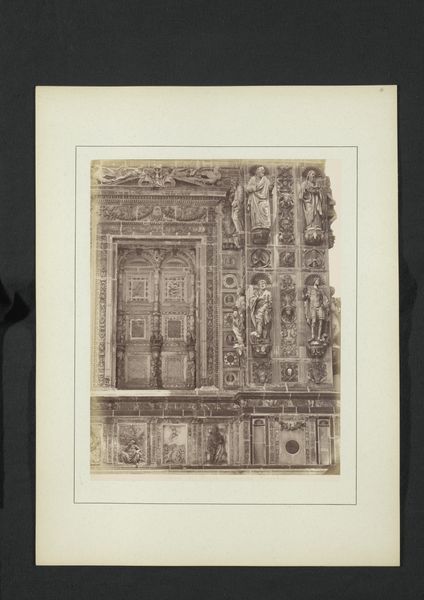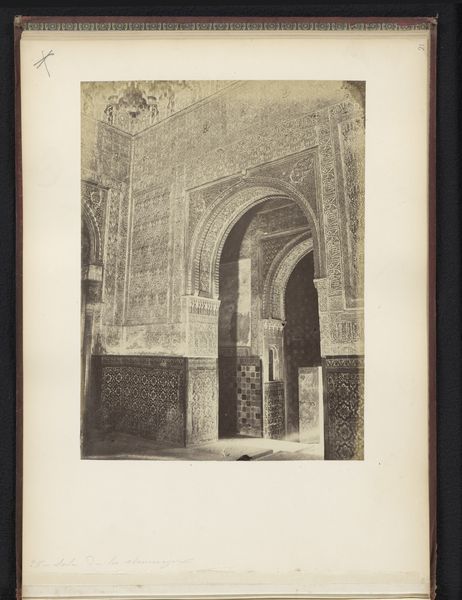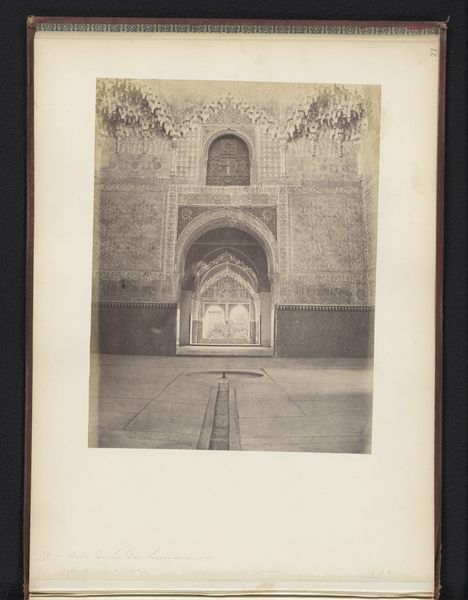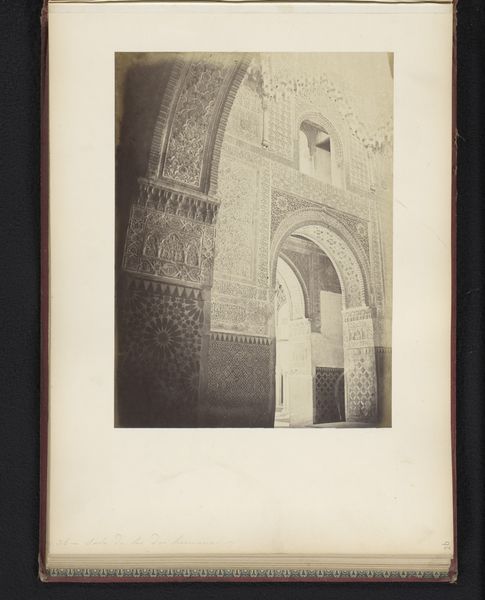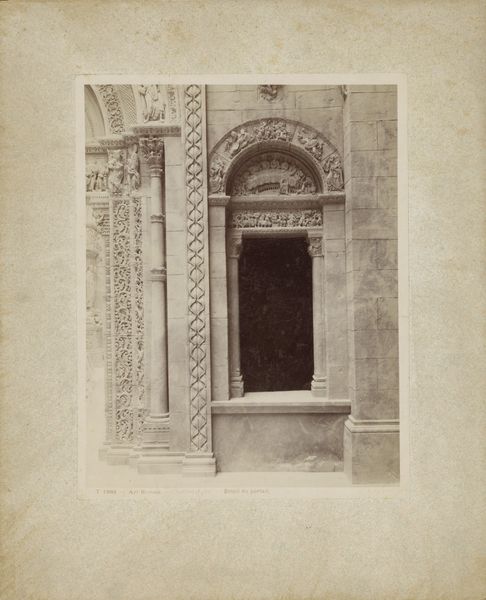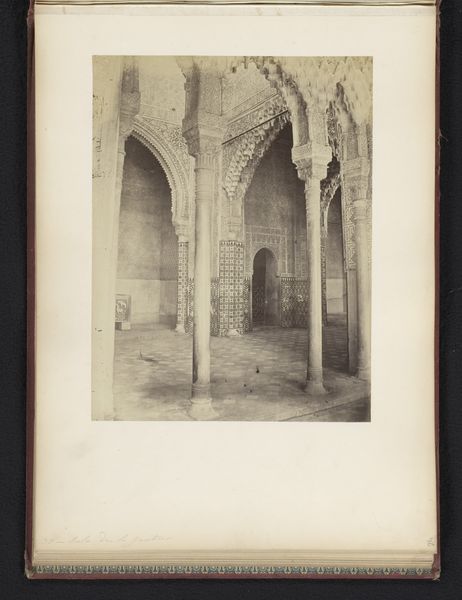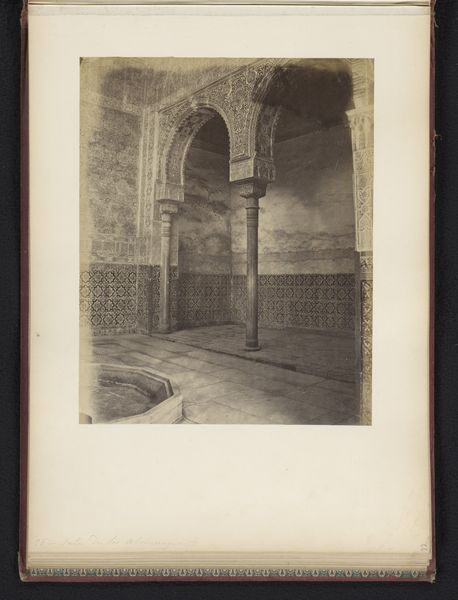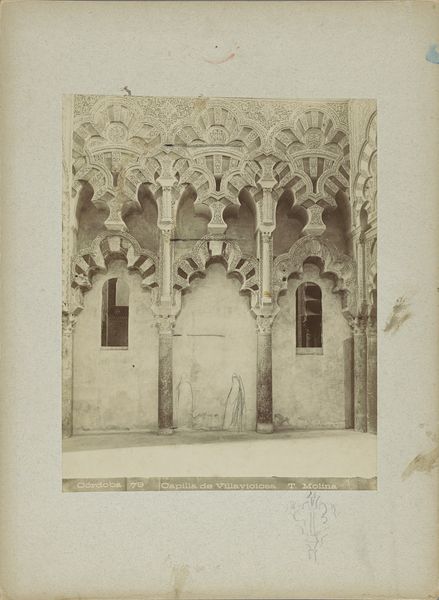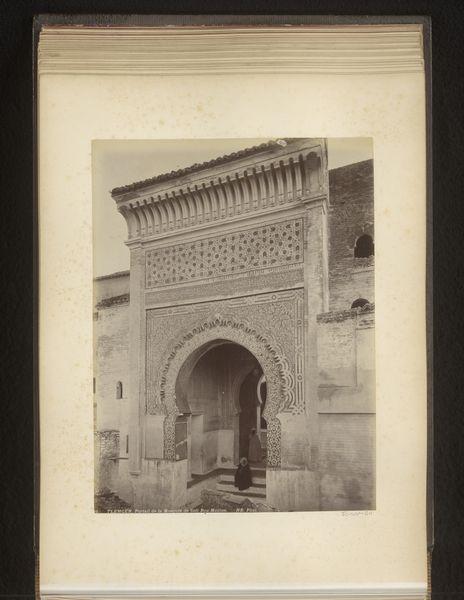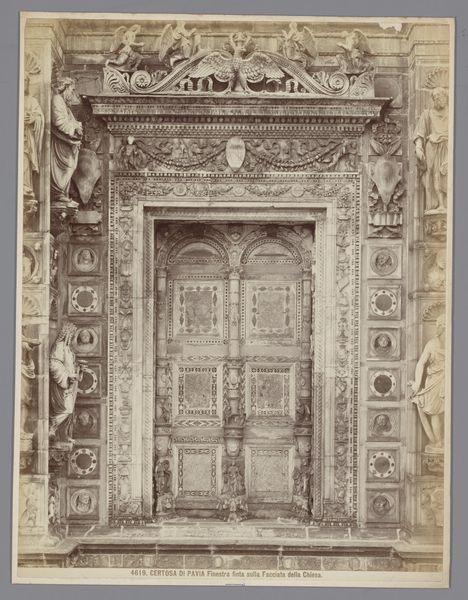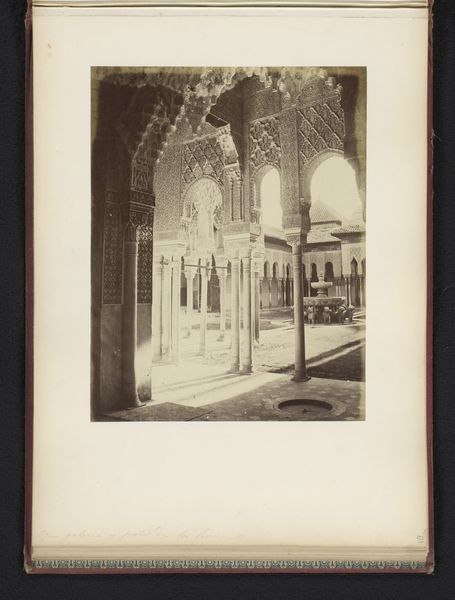
print, photography, architecture
#
portrait
# print
#
photography
#
architecture
#
realism
Dimensions: height 380 mm, width 287 mm
Copyright: Rijks Museum: Open Domain
Curator: Before us, we have Alfredo Noack's photographic print, "Detail van een raam van de Certosa di Pavia," dating back to before 1882. What's your immediate impression? Editor: An overwhelming sense of ornateness. The frame almost seems to vibrate with detail, like an elaborate stage set designed to emphasize… confinement. The gridded window bars are very prominent, the symbolic jail for the statuary along the wall. Curator: That resonates strongly. The Certosa di Pavia itself, as a Carthusian monastery, functioned within a strict socio-religious structure. This photographic study isolates a fraction of its facade and captures this tension, perhaps unintentionally highlighting themes of enclosure versus divine aspiration, don't you think? Editor: Absolutely. Look at the profusion of sculptural details—cherubs, biblical figures, ornate panels—all striving for heavenward expression. There is a strong Renaissance visual language with the symmetry and implied geometry and it makes the darker implications more apparent. Curator: It's intriguing to consider Noack’s own perspective. As a commercial photographer catering to tourists, was he simply documenting Italian monuments, or was he perhaps engaging with the social narrative inherent within this architecture? His business grew rapidly because he understood the tourist perspective. Editor: The photographic medium itself adds another layer. The sepia tone, the soft focus of the print – it evokes a past, maybe a romantic, nostalgic longing for something lost within these walls. Each of these elements helps convey feelings tied to spiritual yearning but are stuck, inaccessible. It makes the artwork quite affecting, and I suspect that this reaction has remained relevant from its time through our own. Curator: A poignant observation! It leads me to reflect on the modern audience and the role the architecture still plays. Editor: The way historical symbols speak to modern observers remains fascinating. It helps in realizing we are just a piece of it. Curator: It really does.
Comments
No comments
Be the first to comment and join the conversation on the ultimate creative platform.

